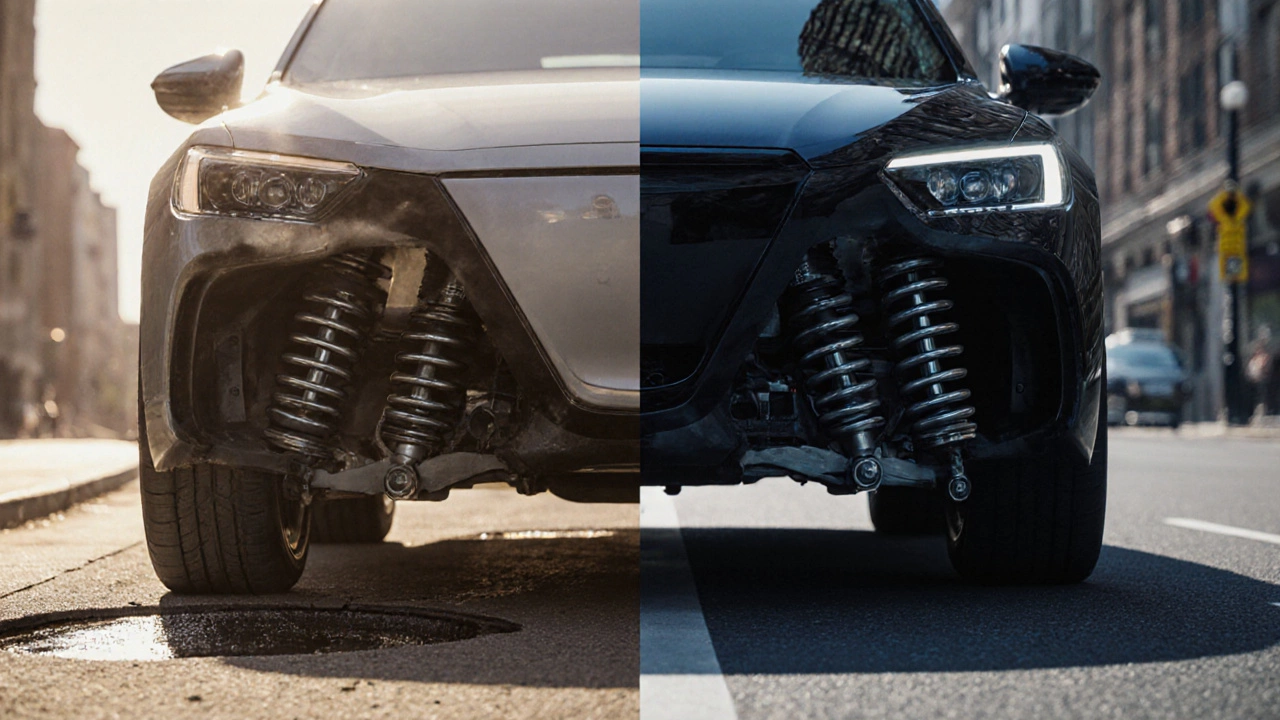Suspension Choice: How to Pick the Right Setup for Your Car
When working with Suspension Choice, the process of selecting the optimal suspension components for a vehicle. Also known as suspension selection, it determines ride comfort, handling safety, and tyre wear. A good suspension choice links directly to suspension shocks, chassis geometry, and road conditions, creating a balanced driving experience.
Key Factors When Picking a Suspension
One of the first pieces you’ll evaluate is Suspension Shocks, devices that absorb bumps and control spring motion. They come in hydraulic, gas‑filled, and coil‑over formats, each with its own damping rate and adjustability. The shock’s primary attribute is its ability to convert kinetic energy into heat, which directly affects ride smoothness. Choosing the right shock type influences handling precision and passenger comfort, making it a core part of any suspension choice.
Next, consider whether your car suffers from a Bent Suspension, a misaligned or deformed suspension arm or component. A bent suspension often shows up as uneven tyre wear, steering pull, or a clunking noise over bumps. The presence of a bent suspension can compromise wheel alignment, increase braking distance, and stress other suspension parts. Spotting this issue early prevents costly repairs and keeps the vehicle stable on the road.
Beyond individual parts, look at overall Suspension Damage, wear, corrosion, or breakage affecting springs, bushings, or mounts. Common signs include sagging ride height, leaking oil from shock seals, and excessive body roll during cornering. When damage reaches a certain threshold, a full suspension repair becomes necessary. Repair work often involves replacing worn bushings, re‑aligning control arms, or fitting new springs, all of which restore the geometry defined in the original suspension design.
Effective suspension repair restores the vehicle’s handling balance and reduces stress on tyres and steering components. A professional repair will check the alignment, test shock performance, and verify that no bent parts remain. By addressing damage promptly, you preserve the intended suspension geometry and keep driving confidence high. This step directly supports the broader goal of a smart suspension choice, ensuring that each component works in harmony.
Don’t forget wheel alignment, which ties every suspension element together. Even the best shocks or springs won’t perform correctly if the wheels are out of spec. Alignment sets the camber, caster, and toe angles, shaping how the suspension reacts to road inputs. Proper alignment reduces uneven tyre wear, improves fuel efficiency, and enhances overall safety – all crucial outcomes of a thoughtful suspension choice.
Now that you understand how shocks, bent components, damage, and repair interplay, you’re ready to evaluate the articles below. They dive deeper into each aspect, from spotting bad shocks to fixing bent suspension arms, giving you practical steps to keep your ride steady and safe.
 10 October 2025
10 October 2025
Soft vs Stiff Suspension: Which Is Better for Your Car?
Explore the pros and cons of soft vs stiff suspension, learn how to match your setup to driving style, and get practical tuning tips for comfort or performance.






0